(D403) Final Consonant Deletion Pack
$5.99 including GST
The “Contrastive Approach” is another common way to treat children with phonological speech disorders.
The Minimal Pairs Approach is suitable for children with mild or moderate speech sound disorders, with one or two phonological processes that are no longer age-appropriate.
This 13-page Final Consonant Deletion resource features high frequency, functional words, with orthography and pictures.
Description
Apart from the Cycles Approach and the Complexity Approach, the “Contrastive Approach” is another common way to treat children with phonological speech disorders.
Who is it for?
The Minimal Pairs Approach is suitable for children with mild or moderate speech sound disorders, with one or two phonological processes that are no longer age-appropriate. It can also be used with people who are looking to modify their accent.
Like the Maximal Pairs Approach, the Minimal Pairs Approach focuses on contrasting differences between phonemes (i.e. speech sounds) in order to reorganise a child’s sound system. Phonemes can differ by:
1. Place – some sounds are made with the lips, tongue tip or the back of the tongue.
2. Manner – some sounds uses a long continuous flow of air (e.g. /s/, /z/), some sounds are short and stop as soon as they begin (e.g. /t/, /p/), etc.
3. Voicing – we switch our voices on to make some sounds (e.g. /b/, /g/), but turn our voices off for others (e.g. /p/, /k/).
In the case of a minimal pair, the two words differ by a single phoneme and by one or two features across place and manner of articulation and voicing.
This 13-page Final Consonant Deletion resource features high frequency, functional words, with orthography and pictures.
For more information about the Minimal Pairs Approach, click here.







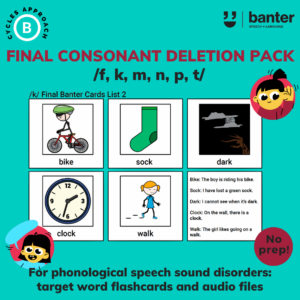
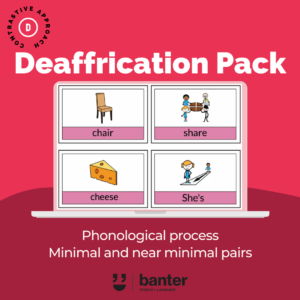
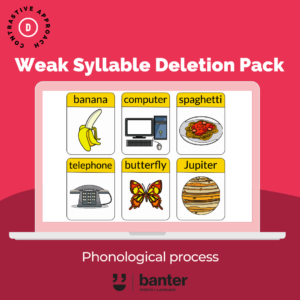
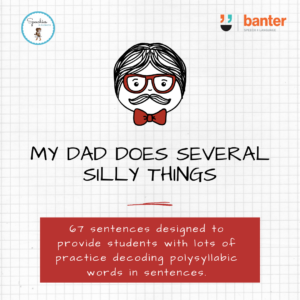 (R304) Decoding Polysyllabic Words in Sentences: My Dad Does Several Silly Things
(R304) Decoding Polysyllabic Words in Sentences: My Dad Does Several Silly Things 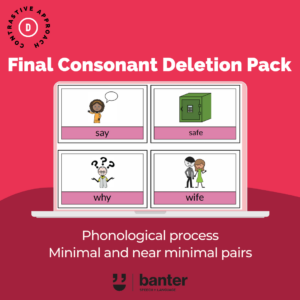
Reviews
There are no reviews yet.